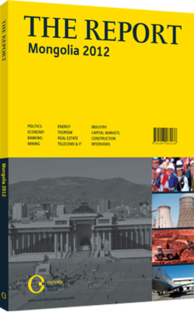Refined developments: Moving to reduce costly imports by building domestic production
When it comes to petroleum products, Mongolia is completely dependent on imports from its neighbours – and particularly its northern neighbour, Russia. Meanwhile, its domestic crude oil production currently heads south to refineries in China. Recognising that this arrangement is far from optimal for Mongolia, the oil and gas downstream sector is gearing up for some big changes in the years ahead. Plans for a new refinery, pipeline links and, in the longer term, a major domestic petrochemicals industry, are now getting under way.
IMPORT, EXPORT: Currently possessing no refinery capacity of its own, 100% of Mongolia’s petroleum products are imported, with nearly all of these coming from Russia and around 1% coming from China and Kazakhstan. The near-monopoly position enjoyed by Mongolia’s northern neighbour belongs to a single Russian company as well, Rosneft. The company has a refinery at Angarsk, near Irkutsk, and in 2011 was responsible for around 94% of all petroleum product imports into Mongolia. The majority of these are brought in by rail, using the Trans-Mongolian rail link that connects to the Trans-Siberian line and runs from the Russian border to Ulaanbaatar and then south to the Chinese frontier. The railway is a 50:50 joint venture with Russian rail. Other quantities are brought in by road.
There are currently a dozen private Mongolian retailers who buy direct from Rosneft, while in certain areas Sod Mongol acts as the middleman for two domestic suppliers. The country has around 1200 petrol stations, many operated by small, one- or two-station businesses. There are also five liquefied petroleum gas stations that supply this product as an auto or household fuel.
The arrangement with Rosneft has recently come under criticism, especially following shortages of diesel and other products, along with the weak position of Mongolian retailers when it comes to negotiating prices.
Meanwhile, given the lack of domestic refining capacity, the crude oil that Mongolia currently produces is exported to China. Almost all of this comes from Block 19 in the far east of the country, extracted under a production-sharing contract (PSC) by Petrochina Dachin Tamsag (see analysis). Figures from the Petroleum Authority show that up to September 2011, some 1.61m barrels were extracted in Block 19, with 1.6m barrels exported. The crude from this block is loaded into road tankers to make the trip south, while smaller-scale production at the southern Block PSC 97 goes by rail.
While this export business does provide the Mongolian exchequer with substantial income – in 2010, the country earned MNT57.2bn ($44.6m) from oil exports and has earned MNT144.1bn ($112.4m) since these began in 1998 – the government feels that refining output at home would be more beneficial.
HOME SWEET HOME: To start the process, a government resolution in July 2011 called for a refinery to be built and operated by a state-owned company.
Yet challenges remain in the carrying out of this policy. Output of crude is currently low, as the upstream sector is still largely in its infancy. While most production is in the north-east, exploration work is going on in around 40% of the country’s territory. Choosing the right location for a refinery is thus a challenge, as is determining its size. As of autumn 2011, no firm decision had been made on whether to build one large refinery or several small ones.
PRIVATE INVESTMENT: The private sector has also made moves. In October 2011, Mongol Sekiyu, in partnership with a consortium of local oil import and distribution companies including Just Group, Magnai Trade and Petrovis, launched construction of a 2m-tonnes-per-year refinery at Khongor Soum near Darkhan. This $600m project, which is 80% financed by the Japanese Bank for International Cooperation and with Japan’s Marubeni and Toyo Engineering, should produce 1.7m tonnes of oil products a year, once completed in 2015.
Much of the future of the downstream depends on what decisions are taken on refineries and transport infrastructure. If plans for a major industrial centre at Sainshand also go ahead, that city may provide a node for transport, industry and the oil and gas downstream.
You have reached the limit of premium articles you can view for free.
Choose from the options below to purchase print or digital editions of our Reports. You can also purchase a website subscription giving you unlimited access to all of our Reports online for 12 months.
If you have already purchased this Report or have a website subscription, please login to continue.

